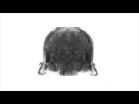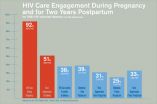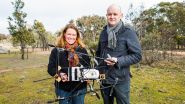Hepatitis A-like virus identified in seals
2015-08-25
(Press-News.org) Washington, DC - August 25, 2015 - Scientists in the Center for Infection and Immunity at the Mailman School of Public Health have discovered a new virus in seals that is the closest known relative of the human hepatitis A virus. The finding provides new clues on the emergence of hepatitis A. The research appears in the July/August issue of mBio, the online open-access journal of the American Society for Microbiology.
"Until now, we didn't know that hepatitis A had any close relatives and we thought that only humans and other primates could be infected by such viruses," said lead author Simon Anthony, assistant professor of epidemiology. "Our findings show that these so-called 'hepatoviruses' are not in fact restricted to primates, and suggest that many more may also exist in other wildlife species."
Hepatitis A viral infection, which impacts 1.4 million people worldwide annually, can cause mild to severe illness. It is a highly contagious disease that is usually transmitted by the fecal-oral route, either through person-to-person contact or through consumption of food or water. "Our data suggest that hepatitis A and this new virus share a common ancestor, which means that a spillover event must have occurred at some point in the past," said Dr. Anthony. "It raises the question of whether hepatitis A originated in animals, like many other viruses that are now adapted to humans."
The researchers discovered the new virus while investigating a deadly strain of avian influenza that killed over 150 harbor seals off the coast of New England in 2011. In an effort to determine what viruses might co-occur with influenza, researchers performed deep sequencing of all the viruses present in three of the marine mammals. They discovered a new virus that was genetically similar to hepatitis A and named it phopivirus. An analysis of additional animals living off the coast of New England (29 harbor seals, 6 harp seals and 2 grey seals) identified phopivirus in seven more animals.
It is unclear whether the virus spilled over from humans to seals, vice versa, or from a third (unrelated) host that has not yet been identified. However various factors, including the fact that the virus was found in different species of seals, suggest that the virus has been present in seals for a fairly long time. The researchers next plan to look at species that have close interactions with seals to see if they can find other wildlife reservoirs of hepatitis A-like viruses. "Coyotes regularly scavenge dead seals along the coast, so it would be very interesting to examine coyotes to see if they have any similar viruses," said Katie Pugliares, MS, a senior biologist at the New England Aquarium in Boston, who was also involved in the study.
The vast majority of emerging infectious diseases in humans have origins in wildlife. In recent years, scientists in the Center for Infection and Immunity led by Dr. Anthony have been working with partners at the EcoHealth Alliance, University of California Davis and others under the auspices of the United States Agency for International Development's PREDICT program to identify potential zoonotic viral threats to human health. "Our goal", said W. Ian Lipkin, director of the Center and John Snow Professor of epidemiology, is "to try to understand drivers of infectious disease emergence thereby enhancing pandemic preparedness."
INFORMATION:
mBio® is an open access online journal published by the American Society for Microbiology to make microbiology research broadly accessible. The focus of the journal is on rapid publication of cutting-edge research spanning the entire spectrum of microbiology and related fields. It can be found online at http://mbio.asm.org.
The American Society for Microbiology is the largest single life science society, composed of over 39,000 scientists and health professionals. ASM's mission is to advance the microbiological sciences as a vehicle for understanding life processes and to apply and communicate this knowledge for the improvement of health and environmental and economic well-being worldwide.
ELSE PRESS RELEASES FROM THIS DATE:
2015-08-25
TAMPA, Fla. - Women who have inherited mutations in the BRCA1 or BRCA2 genes are more likely to develop breast cancer or ovarian cancer, especially at a younger age. Approximately 5 percent of women with breast cancer in the United States have mutations in BRCA1 or BRCA2 based on estimates in non-Hispanic white women. Moffitt Cancer Center researchers recently conducted the largest U.S. based study of BRCA mutation frequency in young black women diagnosed with breast cancer at or below age 50 and discovered they have a much higher BRCA mutation frequency than that previously ...
2015-08-25
The burning of incense might need to come with a health warning. This follows the first study evaluating the health risks associated with its indoor use. The effects of incense and cigarette smoke were also compared, and made for some surprising results. The research was led by Rong Zhou of the South China University of Technology and the China Tobacco Guangdong Industrial Company in China, and is published in Springer's journal Environmental Chemistry Letters.
Incense burning is a traditional and common practice in many families and in most temples in Asia. It is not ...
2015-08-25
Depressed people who turn to their smart phones for relief may only be making things worse.
A team of researchers, that included the dean of Michigan State University's College of Communication Arts and Sciences, found that people who substitute electronic interaction for the real-life human kind find little if any satisfaction.
In a paper published in the journal Computers in Human Behavior, the researchers argue that relying on a mobile phone to ease one's woes just doesn't work.
Using a mobile phone for temporary relief from negative emotions could worsen psychological ...
2015-08-25
MADISON -- Colorful and expressive, the eyes are central to the way people interact with each other, as well as take in their surroundings.
That makes amblyopia -- more commonly known as "lazy eye" -- all the more obvious, but the physical manifestation of the most common cause of vision problems among children the world over is actually a brain disorder.
"Most often in amblyopia patients, one eye is better at focusing," says Bas Rokers, a University of Wisconsin-Madison psychology professor. "The brain prefers the information from that eye, and pushes down the signal ...
2015-08-25
Pregnancy could be a turning point for HIV-infected women, when they have the opportunity to manage their infection, prevent transmission to their new baby and enter a long-term pattern of maintenance of HIV care after giving birth--but most HIV-infected women aren't getting that chance. That is the major message from a pair of new studies in Philadelphia, one published early online this month in the journal Clinical Infectious Diseases, and the other published in July in PLOS ONE.
The studies, led by a team of researchers from Drexel University and the Philadelphia Department ...
2015-08-25
A team from the University of Illinois at Urbana-Champaign and Indiana University combined two techniques to determine the structure of cyanostar, a new abiological molecule that captures unwanted negative ions in solutions.
When Semin Lee, a chemist and Beckman Institute postdoctoral fellow at Illinois, first created cyanostar at Indiana University, he knew the chemical properties, but couldn't determine the precise atomical structure. Lee synthesized cyanostar for its unique ability to bind with large, negatively charged ions, which could have applications such as ...
2015-08-25
Many political leaders, scientists, educators and parents believe that failure is the best teacher.
Scientists have long understood that the brain has two ways of learning. One is avoidance learning, which is a punishing, negative experience that trains the brain to avoid repeating mistakes. The other is reward-based learning, a positive, reinforcing experience in which the brain feels rewarded for reaching the right answer.
A new MRI study by USC and a group of international researchers has found that having the opportunity to learn from failure can turn it into ...
2015-08-25
Since the early days of fertility treatment, women undergoing IVF treatment have had to place a hormonal gel in their vagina on a daily basis for at least 14 days after embryo transfer. The hormone is necessary to increase the chances of pregnancy, but it may also cause some side effects in the form of irritation and leaky discharge.
However, the results of a new scientific study suggest that women will be able to avoid this kind of discomfort in the future.
"Fertility treatment is a physical and mental challenge for childless couples. The daily treatment with hormonal ...
2015-08-25
Researchers at The Australian National University (ANU) and The University of Sydney have developed a world-first radio-tracking drone to locate radio-tagged wildlife.
Lead researcher Dr Debbie Saunders from the ANU Fenner School of Environment and Society said the drones have successfully detected tiny radio transmitters weighing as little as one gram. The system has been tested by tracking bettongs at the Mulligan's Flat woodland sanctuary in Canberra.
"The small aerial robot will allow researchers to more rapidly and accurately find tagged wildlife, gain insights into ...
2015-08-25
A research team at Linköping University, together with colleagues in Europe and the United States, has shown that at extremely high pressure even the innermost electrons in the atomic nuclei of the metal osmium begin to interact with each other, a phenomenon never witnessed before. The findings have been published in Nature.
"If we know more about how a matter works, we will be in a better position to develop materials that withstand extreme conditions. In research we're constantly making advances, but in this case we've taken a giant leap", says Igor Abrikosov, ...
LAST 30 PRESS RELEASES:
[Press-News.org] Hepatitis A-like virus identified in seals



